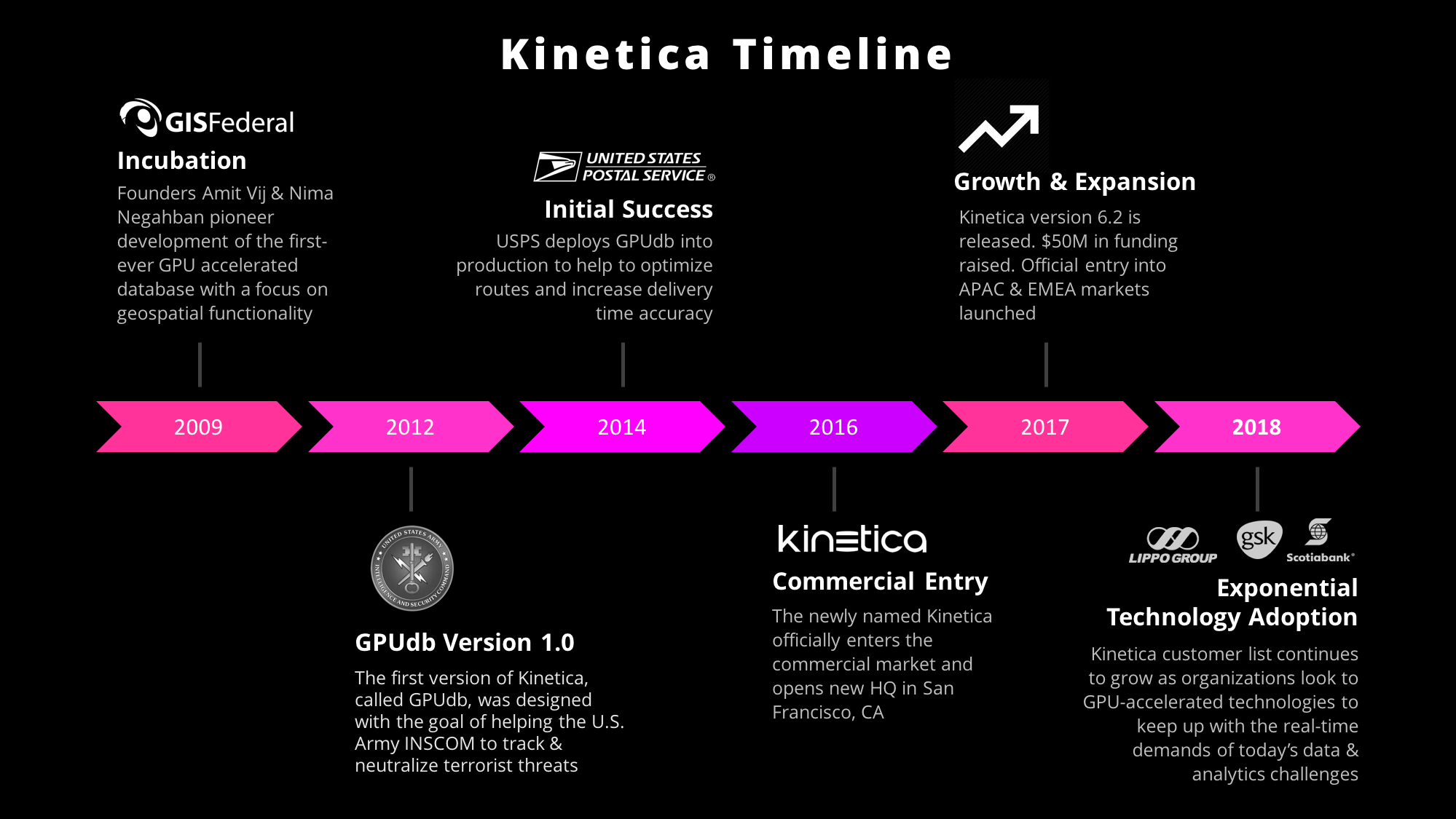The data connectivity world is changing rapidly, with a firehose of data streaming in from devices, people, and channels. How can organizations act on all of that data? We created Kinetica for those competitive organizations who need to leverage big, fast, data in order to remain leaders in their industry.
How did Kinetica come about in the first place? Let’s take a few steps back so I can explain what’s happened to data management infrastructures over the last several years. In the past, organizations have struggled to benefit from the influx of live data such as IoT, as their legacy systems were only designed to periodically load data from transactional systems (OLTPs). They were hitting the performance and scale limits of today’s in-memory and traditional databases; they simply couldn’t ingest and query multiple real-time data sources.
We created Kinetica, a GPU-accelerated database that simultaneously ingests, explores, analyzes, and visualizes streaming data, to solve the real-time data problem.
I started Kinetica (formerly GPUdb), along with CTO and co-founder Nima Negahban, from the ground up. In 2009, the United States Army Intelligence and Security Command (INSCOM) wanted to be able to track national security threats in real time. The solution needed to produce instant results and visualize insights across massive streaming datasets.
However, none of the existing technologies worked sufficiently; data warehouses were too slow, NoSQL wouldn’t scale, and in-memory solutions promised real time but didn’t deliver. Clearly, there was a major technology gap.
The database that we developed was centered around massive parallelization, utilizing GPUs to explore and visualize data in space and time–an approach that has been patented and won a High Performance Computing Innovation Excellence Award from IDC.
In 2014, we had our first big success in the commercial space. We realized that businesses were running up against the challenge of streaming and analyzing data in real time, and we knew Kinetica could solve this problem. The United States Postal Service deployed GPUdb into production to help with optimizing routes and increasing accuracy. The second High Performance Computing Innovation Excellence Award from IDC came out of innovations on behalf of the United States Postal Service.
Fast forward to today: we have re-branded the company to Kinetica and moved our headquarters to San Francisco, so that we can focus on being the leading GPU-accelerated database provider for those organizations that need to make critical decisions instantaneously based on the influx of their data.
To add to this momentum, we recently added $6 million in acceleration financing from Ray Lane, former President and COO of Oracle, for a total of $13 million, which is fueling our entry into the commercial space after 6 years of development and deployments for the government sector. We have also expanded our team across the board in operations, sales, marketing, engineering, and services, bringing in top talent from big data leaders such as Cloudera, Hortonworks, MapR, and Platfora to drive our growth. Our recently announced Version 6.0 of Kinetica features advances in performance, visualization and high availability for enterprise-grade stability and security.
Keep an eye on this blog to learn more about trends in the big data industry, how to incorporate streaming and IoT data into your organization and ways other organizations are using Kinetica to conquer supply chain, logistics, fraud detection, regulatory compliance, customer 360 and a wide range of other business challenges.


